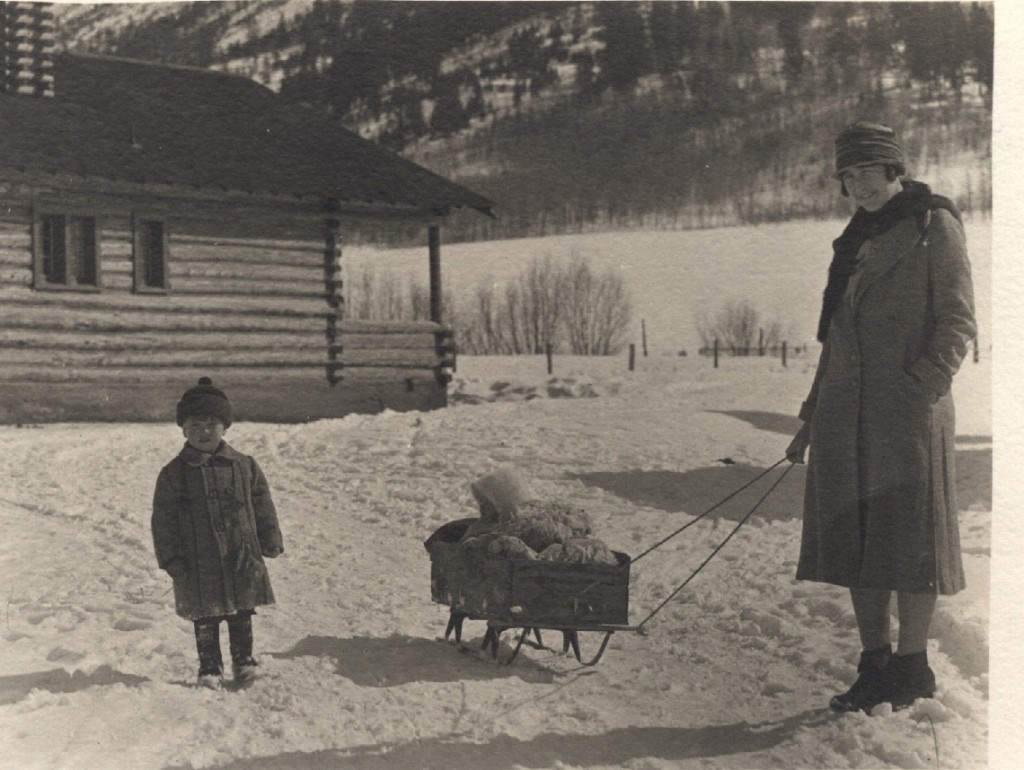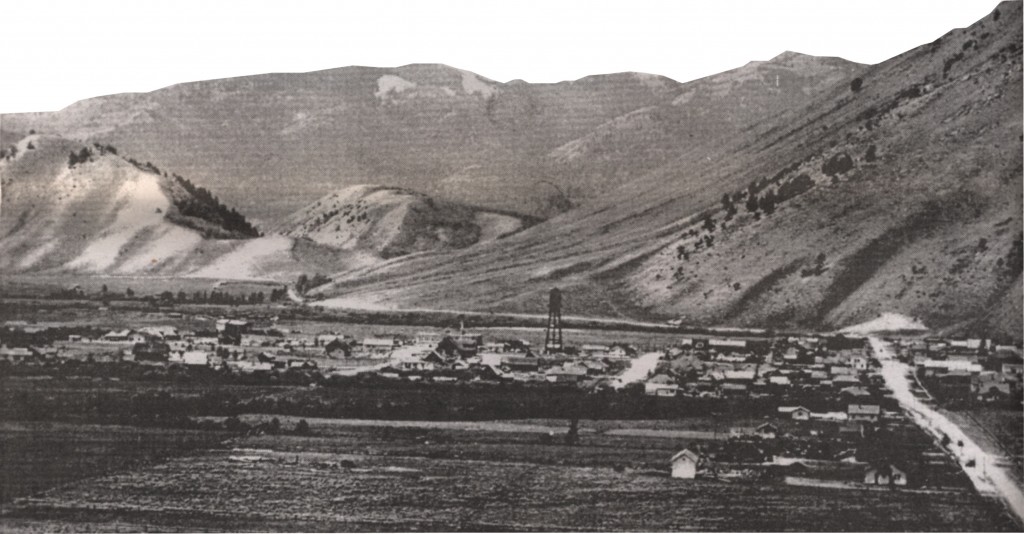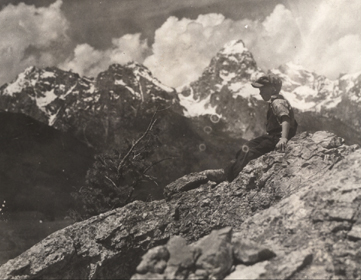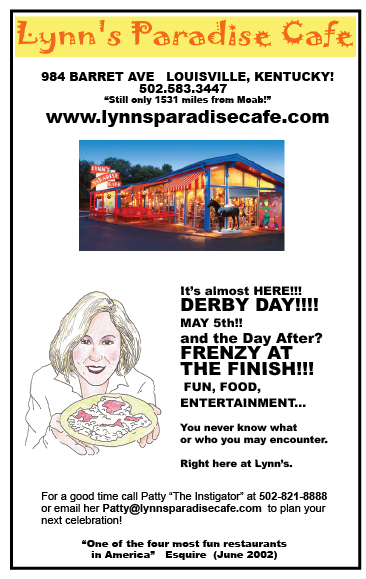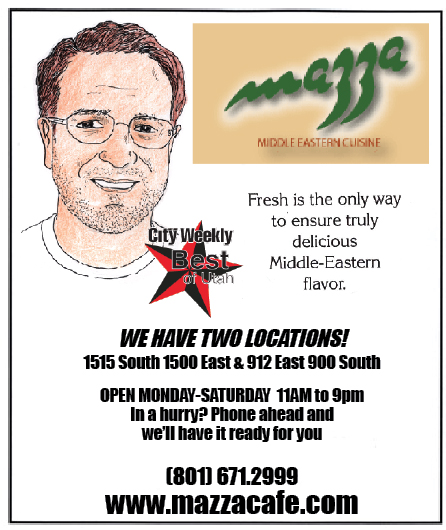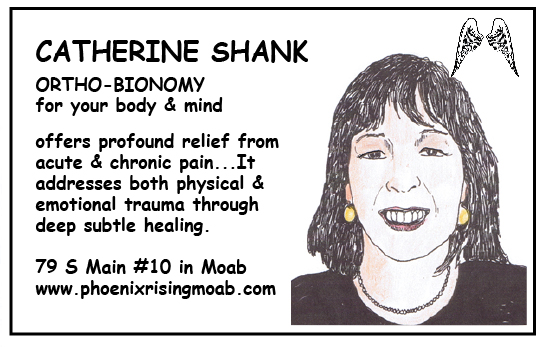Our friend martin Murie left us in January, but with the permission and blessings of his family, we would like to re-print some of his best essays from the past decade. Here is one of Martin’s first contributions, a tribute to his amazing mother, who had died recently at age 100…JS
When my mother went to New York City to receive the Audubon Medal my sister Joanne and I met with her at a hotel in Manhattan. The next night we’d be with a crowd in the Hilton Hotel, picking away at banquet fare, listening to the buzz of high-end political talk, waiting for our mother to stand up, be honored, and say something. The three of us were a long way from home and decades had rolled away between us and small town life in Jackson’s Hole, the “real” Jackson’s Hole, long before our mother became somewhat of a celebrity, tagged by the media as “Matriarch” of the Conservation Movement.
Joanne told me, “I’ve read it (Mardy’s speech). It’s okay.” But I was nervous. Our mother, always so competent and confident in small town and outback places, how would she perform? None of us three kids, by the way, thought of those places as wilderness areas. Desert or mountain, sage plains or high alpine, they were simply where the family went, because that’s where Olaus’s assignments directed him. And the more wild animals the better.
Well, next night on the stage Mardy did fine, opening with a confession that her role in wilderness preservation was to serve tea and cookies. There was a lot of truth in that. Not only was Mardy a superb organizer of social gatherings, those gatherings she hosted on the big front porch of the house were frequent and they offered a quiet space in the Snake River bottoms, a chance to unburden and share concerns.
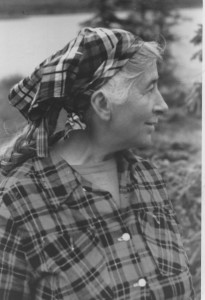 Not quite that simple: Olaus and Mardy were a team, always had been, from the time of their honeymoon on wilderness trails in Alaska. They were in love, partners for life. Olaus was one of a diverse band of government servants … zoologists, geologists, foresters and others in various niches of federal and state bureaus … many of whom were discovering ecology. Aldo Leopold, a perfect example, began as a federal forester whose top priority was to find ways of increasing deer and other “big game” populations, for sportsmen, but he learned from on-the-ground research and experience that nature is incredibly complex, each of its components meshed in relationships. That was what those scientists, in or out of government agencies, were discovering, and it changed their lives.
Not quite that simple: Olaus and Mardy were a team, always had been, from the time of their honeymoon on wilderness trails in Alaska. They were in love, partners for life. Olaus was one of a diverse band of government servants … zoologists, geologists, foresters and others in various niches of federal and state bureaus … many of whom were discovering ecology. Aldo Leopold, a perfect example, began as a federal forester whose top priority was to find ways of increasing deer and other “big game” populations, for sportsmen, but he learned from on-the-ground research and experience that nature is incredibly complex, each of its components meshed in relationships. That was what those scientists, in or out of government agencies, were discovering, and it changed their lives.
Still too simple. Olaus and Adolph, brothers, were a team too. They’d grown up in poverty in Moorhead, Minnesota, near a patch of yet-undeveloped country at the edge of the city where foxes and mink and muskrats and other wild critters lived. Great for playing Indian, or simply finding out about animals. They called it “The Wilderness,” and they, like so many other future biologists, devoured the books of Ernest Thompson Seton. Many struggles later, Olaus, working for the Bureau of Biological Survey (Now Fish and Wildlife Service) and Adolph as National Park Service biologist, married sisters. And so Louise (Weezy) and Adolph (Ade) and Mardy and Olaus, were a foursome, That in itself is a long, fascinating story. I’ll just say that Ade and Olaus honored scientific findings about caribou and wolves, mountain sheep and cattle and coyotes and other predator and prey species by taking those findings seriously. That meant that crude and/or politically driven “wildlife management” practices had to be challenged. The resulting skirmishes, both inside and outside of government, were usually, not always, played by the rules of civilized discourse, but they were demanding, politically fraught, jobs and reputations at stake. Mardy and Weezy could tell you many a tale.
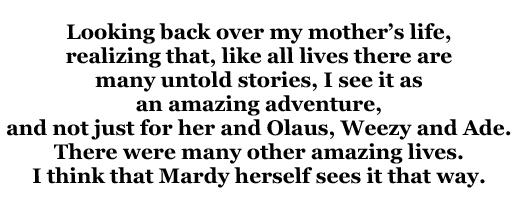
To understand any one of those four, then, you have to relate to all four. Mardy did not stand alone as anything like a “matriarch” of the conservation movement, nor did she think of herself in that way. She was a partner, as she and Olaus and Ade and Weezy discovered that they had worked themselves into a life work and they couldn’t back away from it. And through it all, Mardy and Weezy were the organizers of households and families, whether in tents or on the road or in city or town. They became adept at what to take and what to leave behind. There was none of this nonsense about wilderness travel for the sake of proving oneself, of enduring pain and danger. No, the objective was to be safe, and comfortable. After all, there was work to be done. If you read back into the journals of other wilderness travellers you will find that same emphasis: safety and comfort.
When Olaus died, Mardy carried on, into the sixties and seventies, the new wave of environmental activism, and the bleaker years of the eighties and nineties. Visitors kept on showing up at the ranch, to be warmly greeted and served with tea and cookies and conversation blossomed. When asked, Mardy answered forthrightly, about wilderness, about its necessity. No wavering. I think that the calm certitude in her voice and the direct simplicity of her words are one clue to her becoming noticed among so many environmentalists. In a nation increasingly addicted to middle-of-the-road solutions to everything, it must be refreshing to see someone play her cards like that. My brother Donald is quoted as saying, “I have seen people walk away from visiting with her as though they had been visiting a shrine.” (Casper Star Tribune, 7/27/02) He’s right, I’ve seen that too, and it is not an easy thing, not easy at all, for a grown child (speaking about myself now) to discover a parent in a radically new role of that sort. For me, there’s a terrible vulnerability about it. Exploitation lurks.
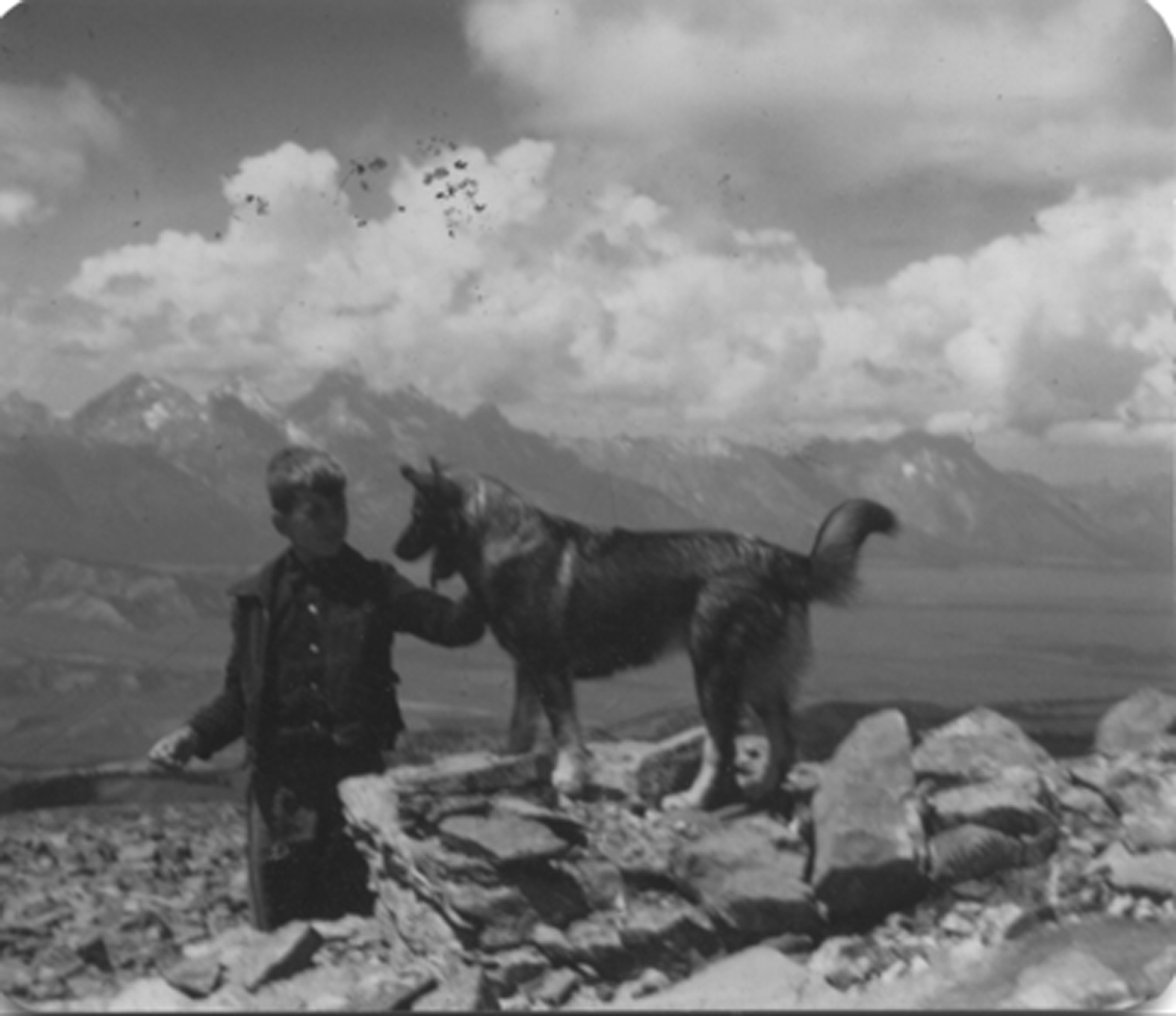
Here’s a different scene: Nevada, a hot and thirsty day. We came to an abandoned cattle ranch. The house sagged, wooden frame and sheathing dried and its color washed out by sun and wind, low mesas in all directions, pale, dry, utterly quiet. A blue enamel cooking pot half buried in the dusty yard was the only bright object. My mother pointed to it. “A woman lived here,” she said, as though murmuring to herself, “so many years.” She told me once that she had spoken out in defense of men, at a women’s writers’ conference. She was telling me that her generation was different and she wasn’t about to switch over to current fashion. Remember, Mardy was born in ‘02 … 1902 that is … became a teenager in World War I and a young woman in post-Klondike Alaska where her male acquaintances were gentlemen sourdoughs of Victorian demeanor, or rascals. The rascals were best talked about privately, among women. And later, in Wyoming, cowboys sometimes touched the brim of the hat when meeting a woman on the street, and an ex-cowboy, a politician, say, might even raise the hat.
Those were times of subterranean contrariness, not open rebellion; more acts perhaps, fewer words. Looking back over my mother’s life, realizing that, like all lives there are many untold stories, I see it as an amazing adventure, and not just for her and Olaus, Weezy and Ade. There were many other amazing lives. I think that Mardy herself sees it that way.
A few years ago she wrote a letter bringing us up to date on her latest journey to speak for wilderness, including a brief account of a forced landing in Alaskan wilderness and signing off, “your adventuring mother.” I keep thinking of those many people who go away from her home in Moose, Wyoming feeling as though they’ve been to a shrine. I hope that they will not stop with the feeling good phase. I hope they see themselves as adventurers, people of a certain contrariness, who will fight for wilderness or endangered species or the rights of workers, the rights of women … whatever cause lies closest to them.
To read the PDF version of this article, click here.
Don’t forget the Zephyr Ads! All links are hot!


